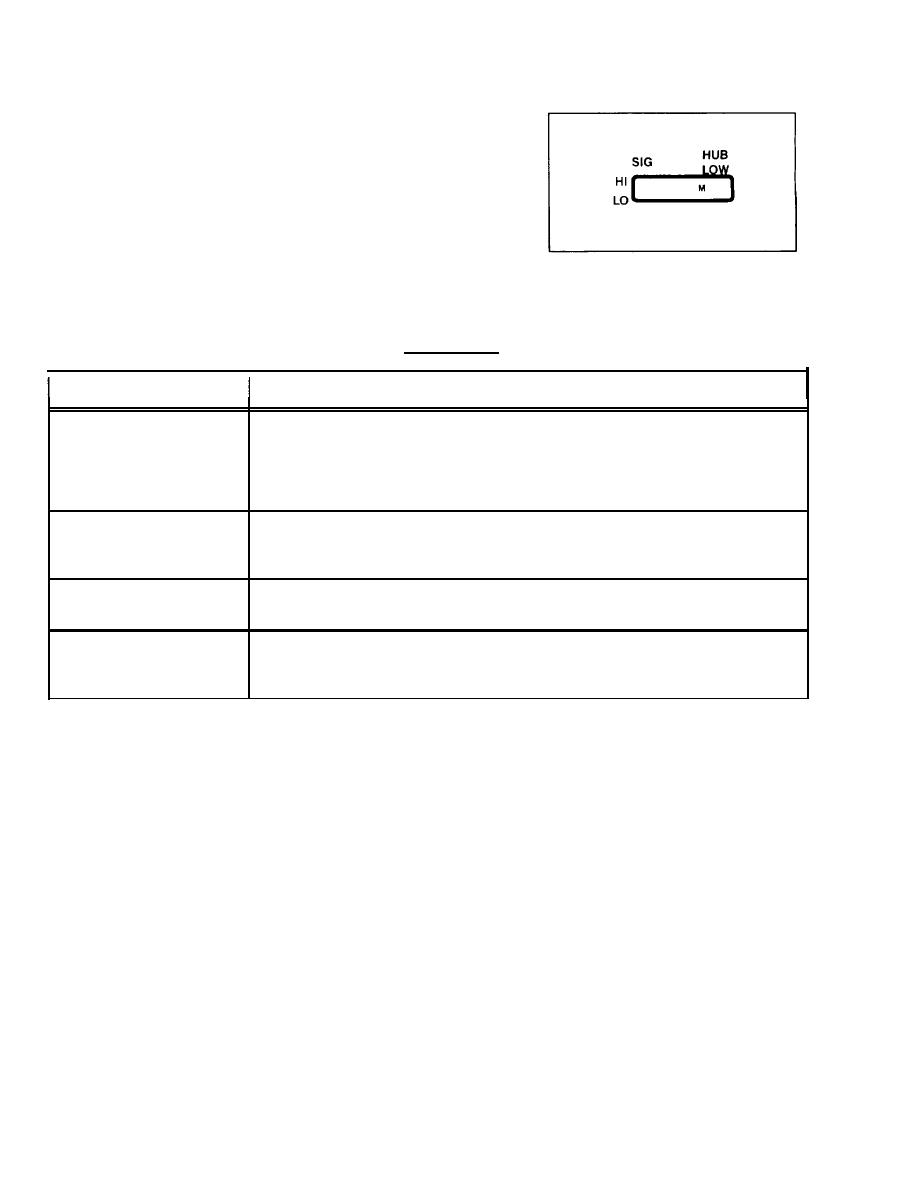 |
|||
|
|
|||
|
|
|||
| ||||||||||
|
|  TM 11-5820-890-10-8
RT DISPLAY
The RT display window located
above the keypad provides the
operator information regarding
signal strength, status of the HUB
battery and a host of operational
such
as
SC
messages
frequencies, net ID numbers, sync
time, and failure messages. This
RT display is the primary means by
Figure 5-9. RT Display
which the radio communicates
with its operator
RT DISPLAY SIGNALS AND USES
PURPOSE
SIGNAL
SIG
Signal strength is shown as a lighted vertical bar at the left side of the RT
display window; the higher the bar, the stronger the signal. Activation of this
(Signal)
bar advises the operator that traffic is on the net or that an ERF or OTAR
message has entered the radio. Continuous activation of the signal display
bar is an indication of enemy jamming or friendly interference.
LOW HUB
When the Hold-Up Battery (HUB) becomes weak, a diamond-shaped light at
the right side of the RT display will flash; if the HUB is dead or missing, this
light will remain on. This light appears only while the RT display is active.
M
Some versions of the SINCGARS radio display an "M" near the right side of
the RT display indicating that traffic is being sent over the net.
(Message)
INFORMATION
Examples of some of the information the operator will receive from the RT are:
"53550" (SC frequency); "TEK 1" (COMSEC key); "ST0_" (Store where?);
(For the operator)
"F123" (net ID); "FAIL 5" (Need to go to CT; RT- 1523 only)
5-10
|
|
Privacy Statement - Press Release - Copyright Information. - Contact Us |